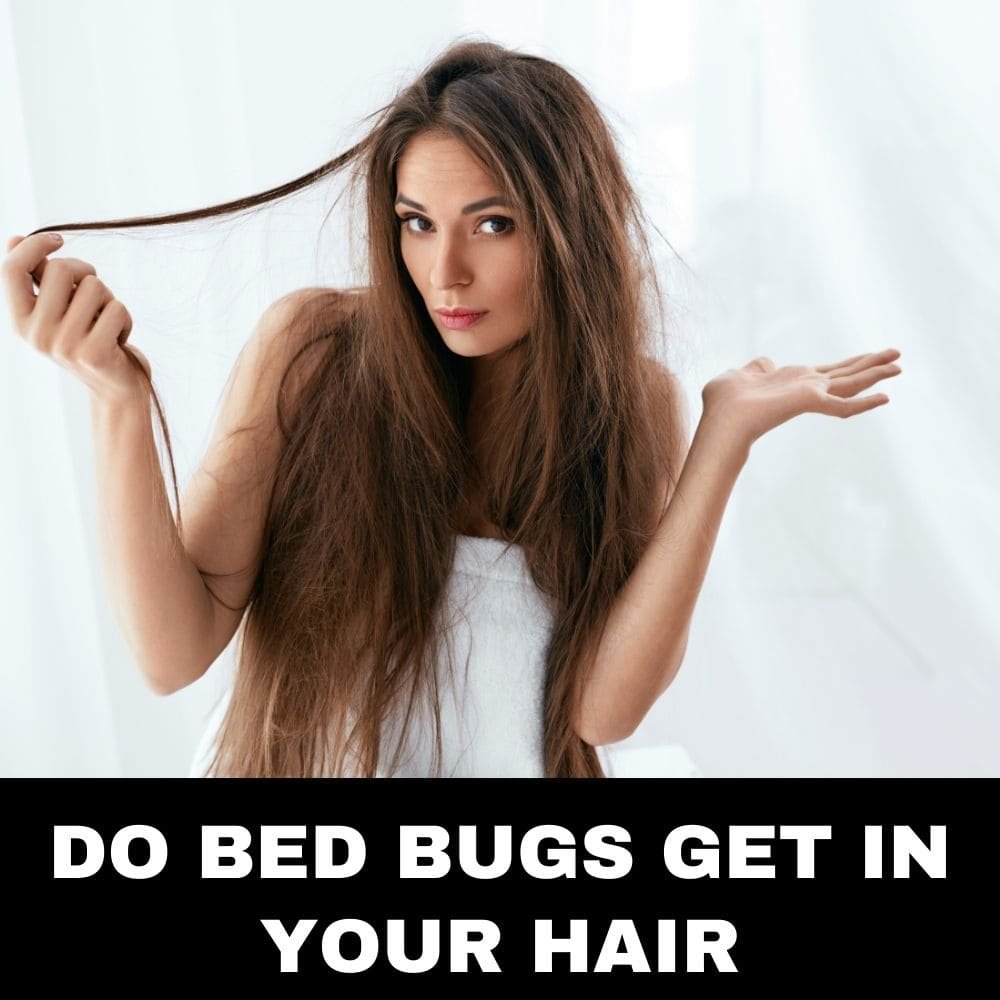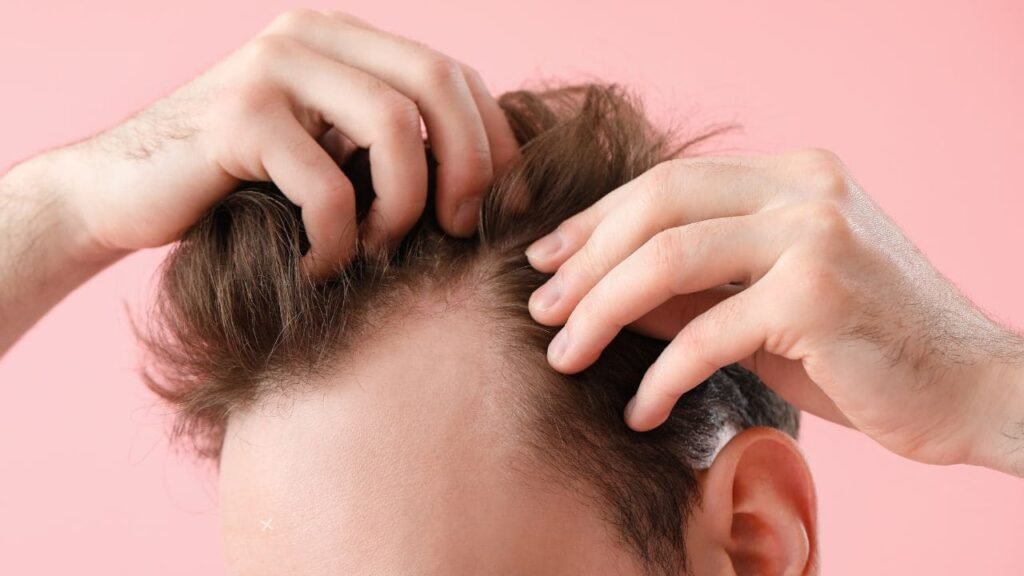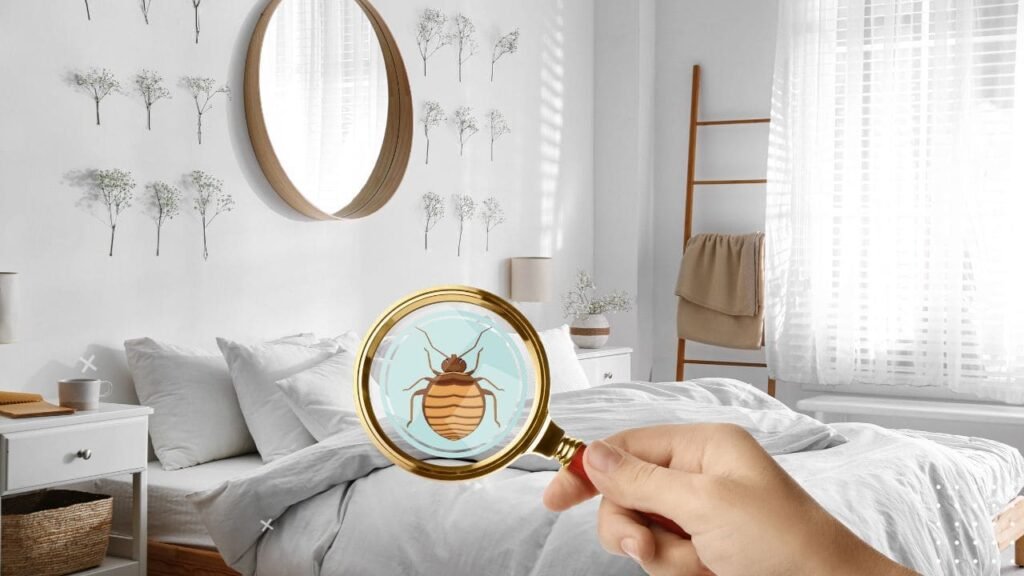


The thought of tiny bed bugs lurking in your hair, feeding on your scalp is the stuff of nightmares. As someone who has battled my fair share of bed bug infestations over the years, I know how horrifying yet fascinating these creepy crawlers can be. So can bed bugs actually take up residence and lay their eggs in human hair? I decided to find out once and for all if bed bugs can get in your hair.
When I felt that first itchy welt on my neck and discovered a bed bug hiding in the seams of my mattress, I went into full panic mode. Late at night I would shine a flashlight on my head, convinced I saw a tiny bed bug moving in my hair. Of course it always turned out to be shadows or dandruff flakes playing tricks on me, but it got me wondering – Do Bed Bugs Get in Your Hair?
I wasn’t finding clear answers online or from pest control experts about whether bed bugs can get in your hair, so I decided to pull back the sheets on the hairy truth myself. Read on for my full investigation into whether bed bugs can live, nest, feed, lay eggs, or complete their life cycle in those long locks growing out of our heads. You might be surprised by what these wily insects are and aren’t capable of!
First things first – we need to understand what bed bugs require to successfully colonize a living space and reproduce. Based on their biology and behavior, human hair simply does not offer what bed bugs need in terms of warmth, shelter, safety, proximity to their food source, and more.
Although some people imagine bed bugs lurking deep inside hair follicles or hiding bundles of eggs along hair shafts, the physical structure and environment of human hair makes this highly unlikely. But before you breathe that sigh of relief – bed bugs can still invade your hair opportunistically. More on that soon!

To understand why our hair doesn’t provide a prime residence, we need to look at what bed bugs require to thrive:
Warmth
Bed bugs are cold-blooded and prefer temperatures between 70-80°F – the perfect comfort zone when snuggled into cozy furniture or bedding near their human hosts. But hair simply doesn’t provide the level of warmth and insulation bed bugs relish.
Shelter and Safety
With flat, pliable bodies that max out at 5mm in length, bed bugs squeeze themselves into the most protected nooks and crannies they can find. Wood, fabric and paper materials provide both physical safety and darkness.
By contrast, individual strands of hair waving about in the breeze offer them no protection from predators, light, or defensive humans looking to squash them!
Close Proximity to Food
Since human blood is the only thing on the bed bug menu, they need direct access to their slumbering hosts. This means bed bugs stick close to areas where people sleep or rest, like beds, couches and recliners.
Humans don’t spend much time reclining with their heads hanging upside down, so hair doesn’t offer great accessibility for regular feedings!
Ability to Reproduce
Perhaps most importantly, bed bugs need harborages that support egg-laying, hatching and nurturing baby bugs through 5 molting cycles – their version of insect development and maturation.
Human hair simply lacks the right physical traits and environment to promote successful reproduction. But other small parasites actually are specialized for life among hair fibers, as we’ll discuss later…
So while hair may seem like the perfect hiding spot in theory, the reality is that bed bugs rely on more traditional habitats like wood and fabric items to meet their biological imperatives.
Now, the fact that hair isn’t the preferred habitat for bed bugs doesn’t rule out them temporarily invading your locks if needed. After all, bed bugs are nothing if not opportunistic.
At the end of the day, bed bugs are tiny vampires programmed to sniff out warm-blooded hosts and tap into blood wherever they can access it. If they detect the carbon dioxide, heat and scents emitted from your scalp, bed bugs can and will treat your hair like an all-night diner!
So while you probably won’t find hem hanging out breeding and raising families within your bouffant, bed bugs may still crawl onto the head seeking blood meals. Keep this in mind as you inspect and treat infestations!

If not hunkered down inside hair, where do these crafty insects set up shop inside your home? Bed bugs have a strong preference for snug harborages in wooden furniture, bed frames, floor moldings, picture frames and similar crevices.
During heavy infestations, bed bugs radiate out from human sleeping areas in search of new real estate. Often this leads them behind electrical switch plates, inside appliances, under peeling paint or wallpaper, and even sheltered spots outdoors like sheds and garages.
But regardless of how widely bed bugs scatter through a seriously infested home, you most likely won’t find them living directly on human bodies. Our hair and skin simply doesn’t offer hospitable habitats supporting entire bed bug lifecycles and reproduction.
That privilege is reserved for other organisms uniquely evolved to live as permanent parasites on people…
While bed bugs may come crawling through your hair sporadically when food is scarce, they always beat feet back to protected nesting spots afterwards. But other parasitic bugs have evolved specifically to live, feed and reproduce in and on people full time:
These tiny tan insects have claw-like appendages perfectly adapted to grasp onto hair shafts and hold tight. Head lice cement their tiny nits (eggs) to hair follicles and drink blood straight from the scalp. They spend their entire 3-4 week adult lifespan right on that warm human head!
Microscopic mites burrow into the outer layer of human skin, laying eggs and crawling about setting off intense itching and rashes. A female can live 2 months on the body, laying eggs daily that hatch within 3-4 days.
Fleas have hind legs specialized for incredible jumping power, aiming to land right on a nearby mammal host. They bite ferociously and dwell in human and pet fur as adults, before dropping eggs that tumble into rugs and bedding below.
As you can see, these parasites have specially evolved tools and instincts for targeting humans as both food sources and living habitats generation after generation. Bed bugs just visiting for dinner simply can’t compare!

| Parasite | Appearance | Behavior & Habits | Symptoms |
|---|---|---|---|
| Bed Bugs | Flat, oval, wingless, reddish-brown, apple seed-sized | Temporary visitors that feed on scalp but don’t nest in hair | Itchy red welts, often in lines |
| Head Lice | Tan, wingless, size of sesame seed | Grip hair shafts to remain on scalp; cement eggs to follicles | Itchy scalp, visible nits stuck near base of hairs |
| Scabies Mites | Microscopic; female mite burrows under skin | Burrow into top skin layer; lay 3-4 eggs daily | Intense itching & rash; worm-like tracks visible |
| Fleas | Dark brown, laterally flattened, wingless | Jump onto hosts to feed then return to nesting sites | Small red bumps, concentrated around ankles and legs |
Hopefully by now I’ve convinced you that bed bugs living full time in human hair is highly unlikely. But how do you know if those occasional dinner guests are crawling through your hair? And what should you do if they are?
Carefully inspecting your scalp is an important part of monitoring bed bug infestations. Look along the hairline at the back of your neck and behind ears for signs of bites or clinging bed bugs. You may feel slight tickling sensations that send them scurrying if disturbed.
Use a magnifying glass and comb carefully through sections of hair right down at the scalp, revealing any bugs present. Look also for tiny white eggs deposited near follicles. Comb above a piece of paper to catch any bugs or eggs that dislodge.
If live bed bugs are found on your head, start by taking a hot shower and lathering up well with anti-dandruff shampoo containing tea tree oil. This can kill and flush away bed bugs from hair before they bite.
For more severe hair infestations by lice, mites or fleas, medicated shampoos or topical treatments are often prescribed to eradicate breeding parasites. As a last resort, shaving hair very short or completely may be required.
With bed bugs just visiting hair sporadically, prescription remedies are unlikely to be needed. But comprehensive treatment of infested living areas by a licensed pest control professional is still critical for elimination.
| Treatment | Method(s) | Helps Treat | Considerations |
|---|---|---|---|
| Medicated Shampoos | Tea tree oil or pyrethrins-based shampoos | Lice, bed bugs, mites | Use 2-3 times spaced a week apart; leaves residue |
| Wet Combing | Lice comb to remove nits and bugs | Lice | Daily combing for 2+ weeks to catch hatchlings |
| Prescription Topicals | Ivermectin, permethrin creams | Scabies, lice | Apply over whole body, not just hair; repeat application |
| Shaving | Electric or manual razor hair removal | Lice, scabies, mites | Can be distressing/extreme; regrowth can be itchy |
| Professional Pest Control | Insecticide spraying, heating, steaming | Bed bugs and hair parasites | Expensive but comprehensive; often require 2+ treatments |
While occasional bed bug visitors in search of blood are nearly impossible to prevent completely, there are still steps you can take to dissuade them from invading your hair:

And there you have it – the unsettling lowdown on whether bed bugs can live and reproduce in human hair. While our locks don’t offer the ideal protected harborage these insects prefer, bed bugs may still choose to bunk down temporarily when few better options exist.
The most skin-crawling reality is that bed bugs will happily dine on blood from any exposed human tissue they can access – including taking late night snacks from your scalp! So although waking up with a bed bug family nesting inside your bouffant is very unlikely, keep vigilant for signs of bites or stray bugs wandering through your hair.
I hope this answered all your burning questions about whether bed bugs can inhabit hair – either as short-term tourists or full-time tenants. For more advice on treating infestations, preventing bed bug introductions, and sleeping tight through the night once again, contact a licensed pest professional today. They have cutting-edge tools and techniques for eradicating bed bugs at their source.
You deserve a good night’s rest without worrying what might be crawling through your hair! Get comprehensive bed bug elimination services and reclaim your peace of mind.
Do bed bugs lay eggs in human hair?
No, bed bugs do not typically lay eggs in human hair. They prefer harborage spots like inside furniture crevices and bed seams that provide more warmth, darkness, and physical protection. The environment inside hair follicles does not allow bed bug eggs to hatch successfully. However, eggs could potentially be glued to hair shaft surfaces if a gravid female wanders onto the head.
Can head lice come from bed bugs?
No, head lice and bed bugs are distinct parasite species and do not produce young together. Head lice require human heads and hair as their primary residence to survive. Bed bugs might feed on the scalp but cannot develop living colonies in hair the way head lice do. An itchy head is more likely caused by lice rather than bed bugs.
Do bed bugs poop in your hair?
They can. Bed bugs produce a huge amount of dark, ink-colored fecal spots wherever they hide. If bed bugs are crawling onto heads for feeding, they will likely defecate some feces onto hair and scalp surfaces. Their poop stains fabric and sometimes resembles dark pepper flecks. Finding such spots may indicate bed bugs passing through hair.
Can bed bugs get tangled and trapped in curly hair?
It’s unlikely. Bed bugs move quickly on smooth surfaces and through fabrics by design. Their flat bodies are not easily caught or tangled in curly hair. However, some very young nymphs or bed bugs with genetic mutations causing stunted/twisted limb growth might have a harder time untangling from dense, coily hair.
Do bed bug eggs hatch inside wigs, extensions, hairpieces, etc?
Potentially yes. Although human hair doesn’t allow successful egg incubation, bed bugs can infest and lay eggs insidesynthetic and real-hair wigs, hair extensions, toupees, etc. if kept near an infested area. Make sure to carefully inspect secondhand hair pieces for bed bug evidence before purchase and thoroughly disinfest using heat or bug sprays. Seal items to prevent re-infestation.
